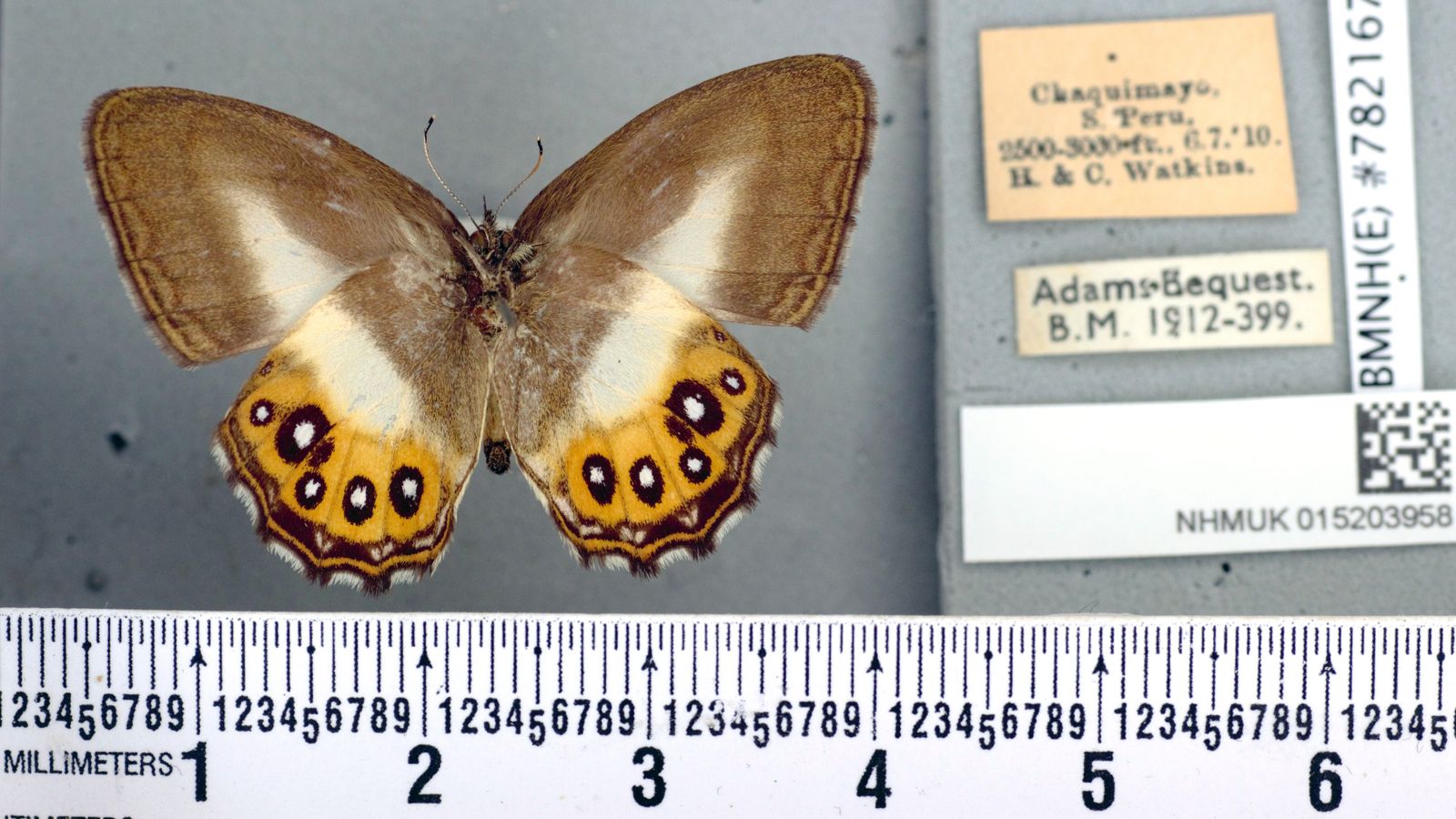The Lord Of The Rings villain Sauron has become the namesake of a new group of butterflies, chosen by scientists in a bid to draw attention to their beauty.
Saurona was picked as the butterflies’ genus name thanks to the black rings on their vivid orange wings, reminiscent of the all-seeing eye described in JRR Tolkien’s books, and subsequently depicted in the Lord Of The Rings films and TV series.
There are currently only two members of this new group – Saurona triangula and Saurona aurigera – however many more as-yet-undescribed species are thought to exist.
Saurona is one of several new butterfly groups described by an international team of researchers in a new paper, and one of two named by Dr Blanca Huertas, senior curator of butterflies at the Natural History Museum.
Dr Huertas and a fellow researcher named the second genus Argenteria, which translates into English as silver mine, in reference to the silver scales on the flying insects’ wings.
Dr Huertas said: “Naming a genus is not something that happens very often, and it’s even more rare to be able to name two at once.
“It was a great privilege to do so, and now means that we can start describing new species that we have uncovered as a result of this research.”
She added: “Giving these butterflies an unusual name helps to draw attention to this underappreciated group. It shows that, even among a group of very similar-looking species, you can find beauty among the dullness.”
Experts hope that piquing public interest will help pave the way to finding out more about the species, including whether they are endemic to an area, or vulnerable to extinction.
Published in a new paper, the findings are the result of a decade’s worth of work by a team of 30 international scientists, studying the butterfly subtribe Euptychiina.
Click to subscribe to Backstage wherever you get your podcasts
The global collaboration included researchers from Natural History Museum London, Harvard University, Florida Museum of Natural History, and Zoological Research Museum Alexander Koenig.
More than 400 different species were analysed, with the Natural History Museum’s butterfly collections of more than 5.5 million specimens contributing significantly.
Advances in DNA sequencing allowed researchers to identify similar-looking species not only by their appearance but also by their genetics.
The butterflies are not the first creatures to be named after Sauron – with a dung beetle, a frog, and a dinosaur already taking the villain’s moniker.
The findings are published in the journal Systematic Entomology.

